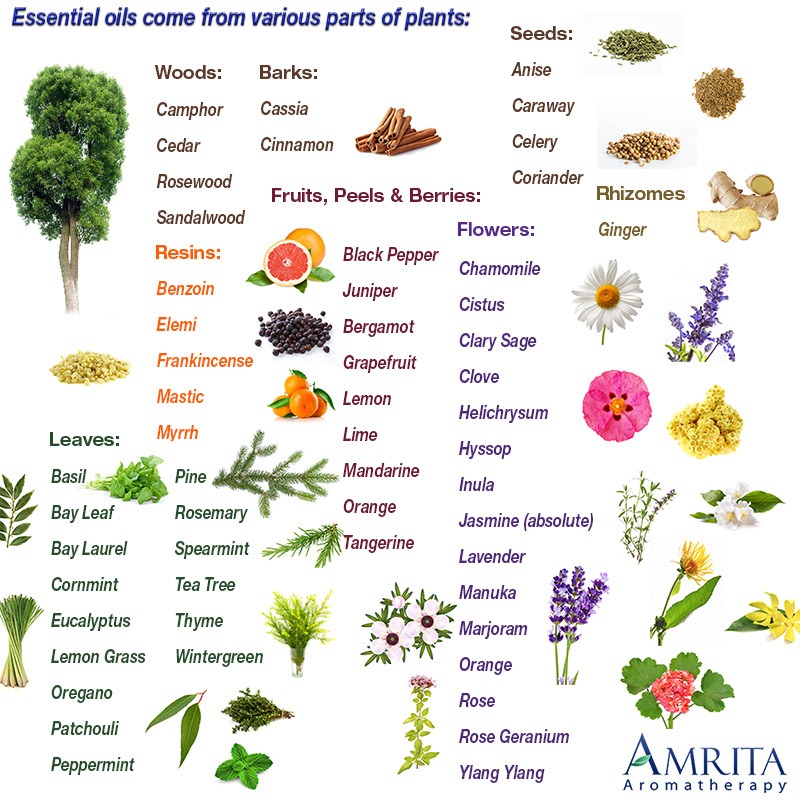How Are Essential Oils Different from Cooking And Massage Oils?
Essential oils are not the same as the edible fatty oils made from nuts and vegetables that we use in cooking and for massage. In a chemical sense, essential oils are not really oils at all. Rather, they are the volatile and fragrant part of the plant, which is found in delicate little sacs on the surface of the leaves or in the bark, flowers, fruit peels or seeds. In addition to giving each plant its characteristic fragrance, essential oils have antibiotic qualities that protect the plant or provide other functions. Some oils protect the plant by repelling insects. Others stimulate blooming. They are complex mixtures of chemical constituents. Rose Otto essential oil, for example, contains over 300 different chemical compounds.
If the plant is collected carefully and the volatile oil is gently extracted, the resulting substance is one of the most precious gifts the earth has to offer. It is the concentrated intelligence of the healing force in the plant, 75 to 100 times more powerful than dried herbs. And because there are molecular structures in the human body that correspond to that of the oils, the plants' intelligence can be used for our healing. For example, when we smell true rose essential oil, our consciousness interacts with the consciousness of the plant; we vibrate with the healing essence and live the wholeness of the rose.
Essential oils can prevent or fight infection, kill bacteria or inhibit its growth, and increase the skin's ability to rejuvenate itself. They can be antiseptic, anti-viral and anti-inflammatory; they can be stimulating, relaxing, euphoric or grounding.
Essential oils can be used in massage, inhalation, baths, lotions and facials. They can also be used to make or enhance household cleaners, cosmetics, perfumes and shampoos. They can reduce stress, promote energy and alertness, enhance spiritual well-being, reduce inflammation, provide pain relief and treat a wide variety of other medical problems. They prove helpful in the treatment of viral infections, burns, headaches, asthma, arthritis and insomnia.
If you are new to essential oils, you may like to see our essential oils guide.

How Are Essential Oils Farmed?
USDA Certified Organic
Every plant we list as organic has been grown, harvested, distilled and handled according to the USDA/NOP standards. Certification is available upon request. Why is Organic Important?
Ecologically Ethical
These oils come from farms that use no pesticides or artificial fertilizers. The oils meet an organic standard but are not certified organic. This situation often occurs in developing countries where no organic certification is available.
Wildcrafted
Many of Amrita's essential oils are distilled from plants that grow in their natural habitat or ecosystem, far away from any pesticides or artificial fertilizers. This is often the healthiest, most natural growing condition for a particular plant species and often yields the finest essential oil.
Conventionally Farmed
A number of Amrita's oils are selected from conventional farms after careful screening.
